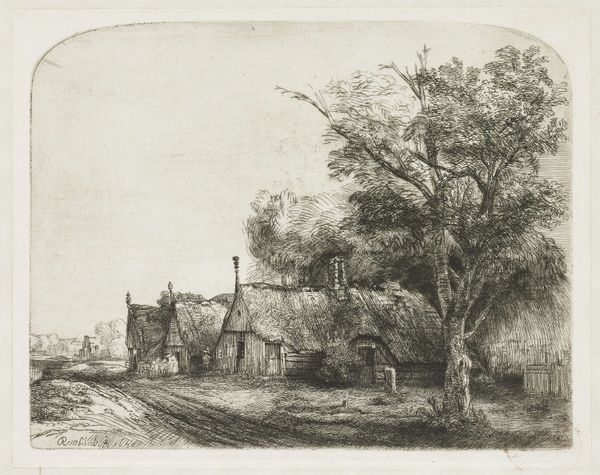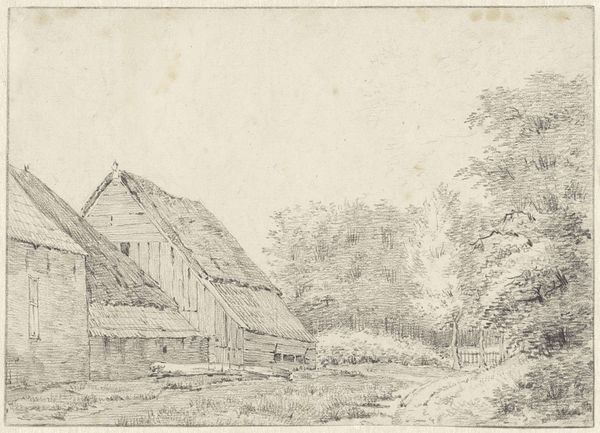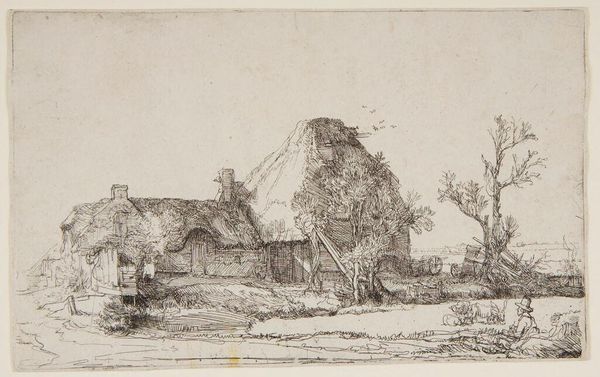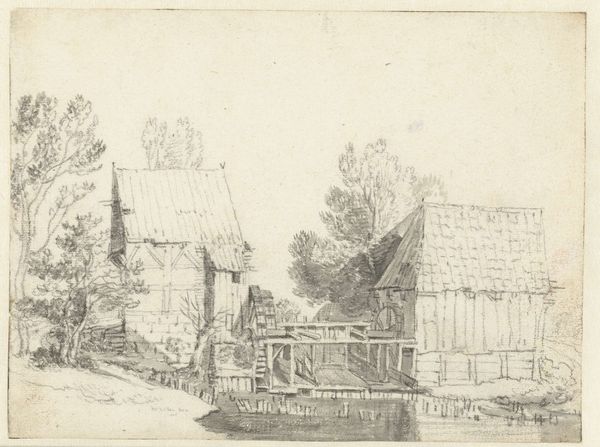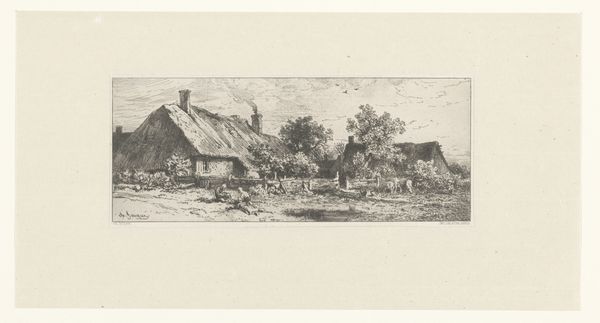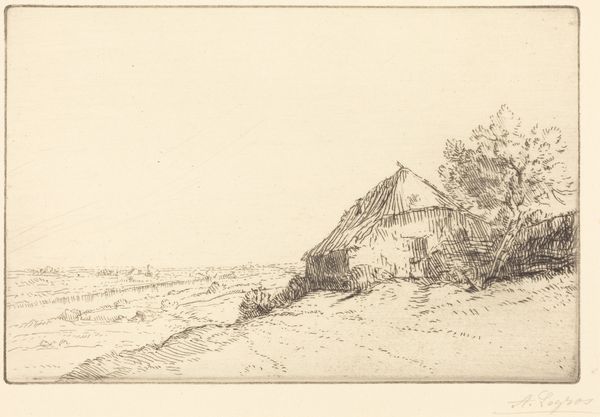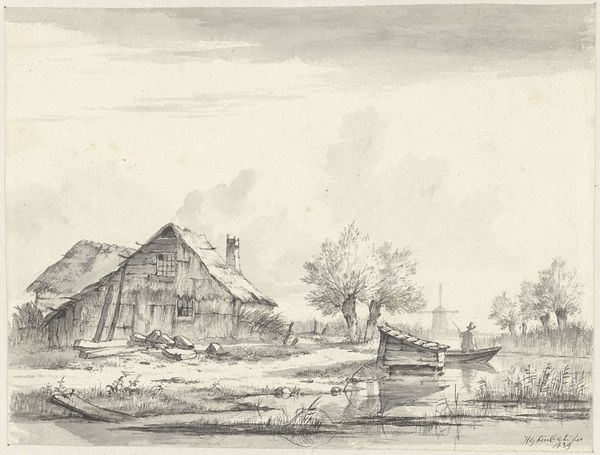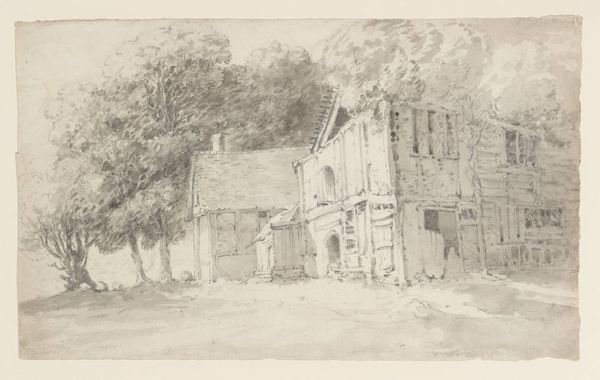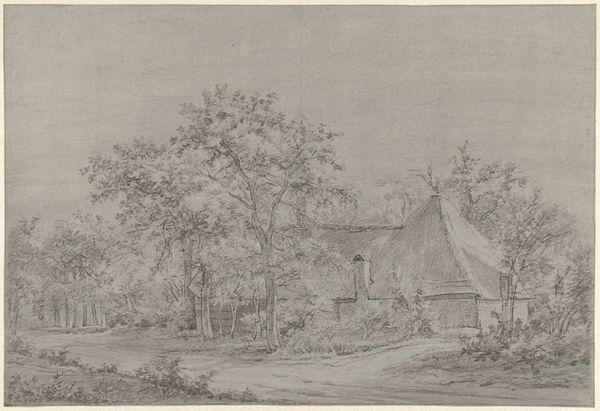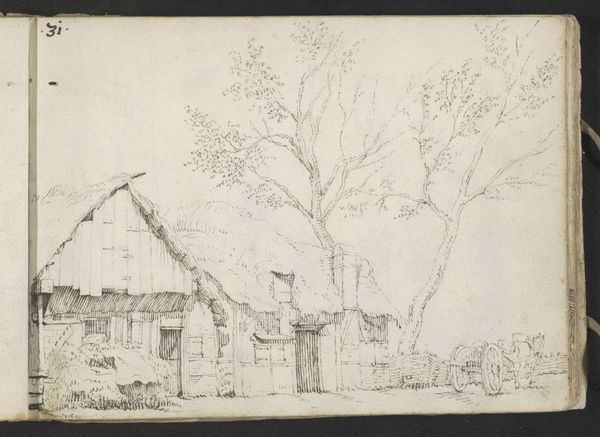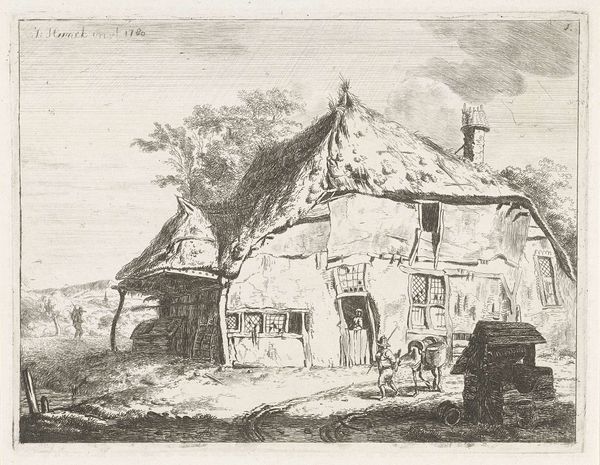
drawing, etching
#
drawing
#
dutch-golden-age
#
etching
#
landscape
#
etching
#
realism
Dimensions: height 148 mm, width 232 mm
Copyright: Rijks Museum: Open Domain
Curator: Here we have "Schuur aan de waterkant", or "Barn on the Waterfront," created in 1849 by Remigius Adrianus Haanen. It’s an etching, demonstrating incredible detail and a mastery of line work. Editor: It feels melancholic, doesn't it? The stark lines of the barn against the wild grass, almost like time is reclaiming it. There's a lonely quality to the whole scene. Curator: Haanen came from a family of artists. The political landscape of 19th-century Europe, with its revolutions and shifts in power, meant that landscape art gained a new importance. The focus shifted to representations of a nation’s local landscape. Editor: And in that light, looking at this barn specifically, it becomes almost archetypal. The weathered walls, the tilting roofline, the implication of a story. What is that one wants to convey with the barn itself? The etymology has paganic roots… Is it some lost agricultural God that the Dutch associate with barns? Curator: Fascinating! Haanen likely trained within the artistic community of his family. So while broader political shifts might be present in how landscapes were favored, the direct symbolic choices he makes would stem more immediately from those artistic conversations around him. He and his brother for instance had an incredibly complicated relationship around who influenced whom. Editor: Do you see the line of trees mirroring the barn’s roof? And how the slight rise of the landscape gently hugs the barn's base? To me, this is meant to invoke the power of nature's subtle design. Like nature would cradle the site of civilization itself, waiting to embrace it entirely again if it disappeared. Curator: It is tempting to frame this melancholic representation as the end of an era of small agriculture in the Netherlands. His work was acquired by major museums like the Rijksmuseum soon after he began producing, suggesting the way institutions elevated certain kinds of subject matter as important cultural touchstones. Editor: The building of a barn involves themes of refuge and shelter. Here, though, the building looks more fragile than sheltering. I now feel almost mournful, aware of time and transformation but accepting it, similar to meditation. I feel now a sense of hope when I look at it Curator: I agree. It’s precisely that push and pull between fragility and endurance that makes Haanen’s piece so compelling.
Comments
No comments
Be the first to comment and join the conversation on the ultimate creative platform.
